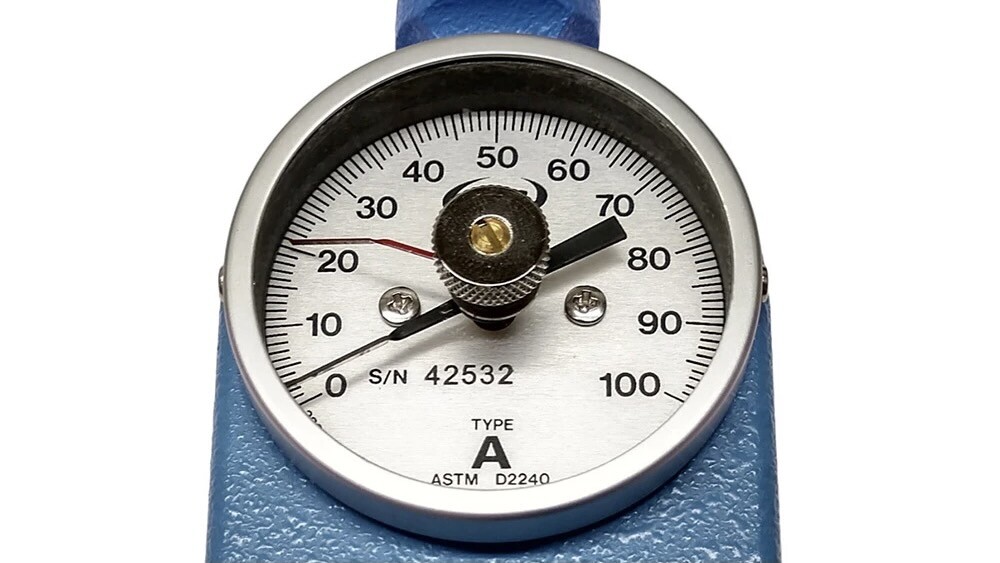Everything you should know about the ink ductor rollers.
The ink roller train is a complex roller arrangement system in printing presses. It continues to be studied and modified to improve ink flow and responsiveness at any press speed.
The press's roller arraignment is a dynamic, seamless, and continuous ink delivery system while in motion. Designed with rollers of different diameters, including oscillating rollers aiming to mill, store and transfer the ink based on the split mechanical function principle. The ink gets transferred at each roller's contact points. Ultimately, it reaches the printing plate that transfers an image to a rubber blanket and subsequently to the substrate surface.
Over the years, press manufacturers worldwide have introduced many strategies to improve ink roller train systems. The ink flow stability and delivery ensure the ink ductor roller's reliable performance, especially at high speeds in modern printing presses.
The first contact point is the key source of most colour density variations in sheetfed printing presses.
Without considering the interrelation of ink roller train and dampening systems, the ink fountain's metered ink is carried in the ink roller train by alternating contact between rigid surface Copper or Rilsan and soft Rubber rollers initiated at the first contact point by the ductor roller and ink fountain roller. The first contact point is the key source of most colour density variations in sheetfed printing presses.
Excellent adaptability demands an ink roller train to suit intricate printing designs by reducing ink starvation, ghosting, banding, or misting issues at different speeds. Presses require fast make-readies and match quality colour standards.
Tack and Viscosity play a vital role in the ink roller train's delivery systems.
Two unique ink properties, Tack and Viscosity, play a vital role in the ink roller train's delivery systems.
One of ink tack's definitions is the attributes of printing inks to describe the force required to split an ink film or, in other words, its stickiness. Ink with a high tack point requires more energy to split than a less tacky film. In contrast, Viscosity measures a fluid's resistance to flow.
Tack is at the center of the ink splitting processes to maintain printing stability and colour consistency.
Offset lithographic inks require tackier inks than other printing systems to handle a range of substrate applications and press sizes formats. The Tack should not exceed the substrate's surface strength, or picking, splitting, tearing, or delamination will occur.
Tack is at the center of the ink splitting processes in multi-colour printing to maintain stability and provide optimum and consistent colour reproductions.
Press manufacturers have introduced many strategies to reduce colour variations.
Many strategies press manufacturers have introduced to improve the ductor roller performance and reduce ink feed asymmetrical impact, causing colour variations.
Some of these strategies are the ink ductor roller cores are much lighter now to reduce impact stress. Spring support assemblies minimize and soften the motion recoil. Wide-size bearings to improve mechanical endurance and softer rubber shore hardness to enhance ink flow. Also, temperature control auxiliary equipment maintains the temperature stability and optimum ink flow at any speed.
Worth noting that Erik Nikkanen, a brilliant Canadian mechanical engineer and inventor with patents in press design systems, addressed the traditional ink train ductor deficiencies in sheetfed press design systems.
In his invention, the ITB (Ink Transfer Blade) shown in live demonstrations on different press designs introduces an ink transfer mechanism built with a reinforced metering ink control system. ITB ensures accurate and predictable ink feed without residual ink left behind at the transfer ink zone. The patent claims to mitigate conventional sheetfed press designs' ink metering systems with erratic and inconsistent ink flows.
Essential steps to improve ink distribution and ductor roller life performance
- Roller's storage must be in the original wrapping at a cool place, away from UV light.
- Do not pile rollers on top of each other, even in the original shipping bubble wrap.
- Leave rollers supported by the bearings ends to avoid contacts and develop flat spots.
- Measure the diameter and document roller shore hardness before replacing a roller.
- Get new bearings with changing ductor rollers.
- Ensure the correct diameter of the ductor roller for the press specifications.
- Secure roller circumference to obtain an optimum rolling circumference.
- When setting the ideal contact strip, do it gradually to ensure the circumference of the rollers. Rollers tend to sag over time, as most elastomers do.
- Ensure light strip contact of the ductor roller to the oscillator and ink fountain roller.
- If the roller flares up at the ends or swelled, replace it. It is not possible to get an even contact strip with flare-up rollers.
- If the roller develops a glaze over time, make sure to deglaze rollers as the glaze will interfere with the ink transferability due to roller slippage. The roller nappy texture promotes efficient ink transfer.
- One of the most effective roller calcium deglazing products is the 'Calcium Slayer and Flush' roller treatment.
- As the roller rubber becomes harder, above the recommended specs, replace it even if it appears physically in good condition. Roller rubber plasticizers are leached out using cleaning solvents, making rubber harder.
- Hardness is one of the critical properties that enhance the roller's ink transfer. The harder the rollers, the more problematic it is to attain printing stability.
- It's not recommended to overload the contact point beyond the factory press specifications.
- Avoid using rollers that are pitted, cracked, or with visible surface damage.
- Use ink roller paste to protect when not using a printing unit to preserve roller dimension stability.
If you have any questions regarding the subject matter in the article, reach out to me by email.
The author's first-hand field experiences expand several years in printing equipment installations, process optimization, and operator training. This article intended to reach the graphic arts industry company's owners, managers, technicians, maintenance professionals, press operators, or anyone directly related to the printing process interested in process optimization and waste reduction.

